7 Sacred Rivers To Visit In India
By: Priyanka Maheshwari Tue, 13 June 2023 11:08:04
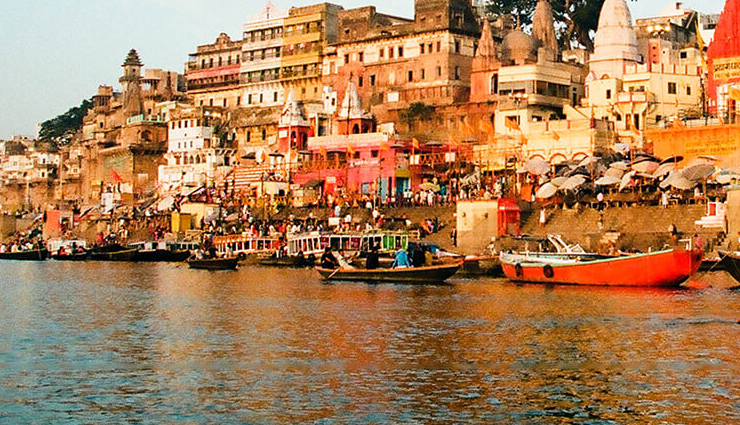
India is a land known for its rich cultural heritage and spiritual traditions, and it is blessed with numerous sacred rivers that hold immense religious significance. These rivers are revered as divine entities and are an integral part of the country's spiritual and social fabric. The sacred rivers of India have played a vital role in shaping the country's history, mythology, and daily life of its people.
One of the most revered rivers in India is the Ganges, also known as the Ganga. It is considered the holiest of all rivers and is worshipped as the goddess Ganga. The Ganges originates from the Gangotri Glacier in the Himalayas and flows through the plains of northern India, nourishing a vast region. The river holds immense spiritual importance, and millions of pilgrims visit its banks to take holy dips and perform rituals to cleanse themselves of sins and seek blessings.
Another sacred river is the Yamuna, which is a tributary of the Ganges. It holds deep religious significance, especially in connection with Lord Krishna. The Yamuna is associated with various mythological stories and is revered as a divine entity. Pilgrims visit its banks, particularly in Vrindavan and Mathura, to offer prayers and seek spiritual solace.
The Saraswati River, though often considered mythical, is considered sacred in Hinduism. It is believed to flow underground and merge with the Ganges and the Yamuna at Prayagraj (Allahabad), where the Kumbh Mela, the largest religious gathering in the world, takes place. The Saraswati is associated with knowledge, learning, and wisdom, and it holds a symbolic significance in Hindu culture.
The Narmada River, located in central India, is also regarded as one of the seven sacred rivers of India. It is considered a form of the goddess Narmada and holds great religious importance for Hindus. The Narmada flows through the states of Madhya Pradesh, Maharashtra, and Gujarat, and its banks are dotted with numerous temples and pilgrimage sites.
Apart from these prominent rivers, India is home to several other sacred rivers like the Godavari, Krishna, Tapti, Kaveri, and many more. Each river carries its unique significance, associated legends, and rituals.
The sacred rivers of India serve not only as a source of physical sustenance but also as spiritual conduits. They are believed to cleanse sins, grant spiritual liberation, and bestow blessings upon the devotees. These rivers have inspired countless hymns, poetry, and spiritual practices, and they continue to be an integral part of the country's cultural and religious identity.
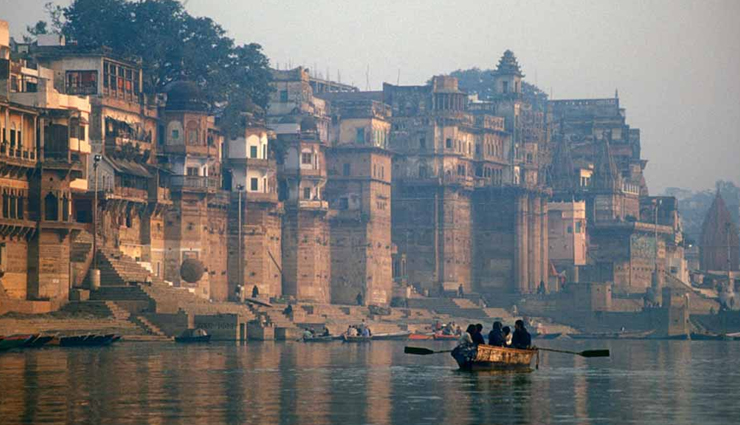
# Ganga River
The Ganga River, also known as the Ganges, holds an exceptionally significant place in the cultural, religious, and social aspects of India. It is considered the holiest and most sacred river in the country, revered as the goddess Ganga in Hinduism.
The Ganga originates from the Gangotri Glacier in the state of Uttarakhand, in the western Himalayas. It flows through the northern states of Uttarakhand, Uttar Pradesh, Bihar, and West Bengal before emptying into the Bay of Bengal. The river spans over 2,525 kilometers (1,569 miles) in length, making it one of the longest rivers in India.
The Ganga has a rich and diverse mythology associated with it. According to Hindu belief, the river descended to Earth through Lord Shiva's locks to purify and cleanse mankind. It is said that taking a dip in the Ganga, especially during auspicious occasions or festivals, can wash away one's sins and help attain salvation.
The river is not only revered for its religious significance but also for its ecological and environmental importance. The Ganga basin is one of the most fertile and densely populated regions in India, supporting a vast agricultural landscape and providing water for irrigation to millions of people. It sustains diverse flora and fauna, including the endangered Ganges River Dolphin.
The banks of the Ganga are dotted with several holy cities, pilgrimage sites, and ghats (steps leading to the river) where devotees gather to perform various rituals and ceremonies. Varanasi, also known as Kashi, is one of the oldest inhabited cities in the world and holds immense spiritual significance. It is believed that bathing in the Ganga at Varanasi can cleanse one's soul and release them from the cycle of birth and death.
Every twelve years, the Kumbh Mela, the largest religious gathering in the world, takes place at the confluence of the Ganga, Yamuna, and Saraswati rivers in Prayagraj (Allahabad). Millions of pilgrims from all over the world gather to participate in the rituals and seek spiritual enlightenment.
Despite its religious and cultural significance, the Ganga faces numerous challenges today, including pollution, over-extraction of water, and environmental degradation. The Indian government and various organizations have initiated several projects and campaigns to restore and rejuvenate the river, aiming to maintain its ecological balance and sanctity.
The Ganga River holds a special place in the hearts and minds of the Indian people. It symbolizes purity, divinity, and the eternal cycle of life and death. It continues to be a source of inspiration, spirituality, and reverence, influencing the lives and beliefs of millions of people for centuries.
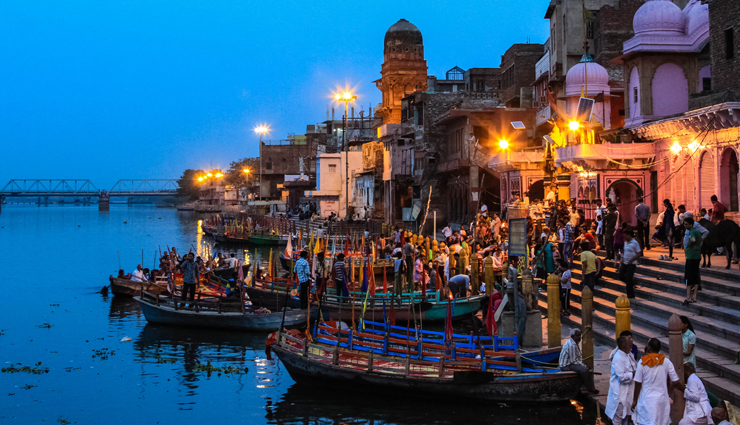
# Yamuna River
The Yamuna River is one of the most sacred rivers in India and holds significant religious and cultural importance, particularly in connection with Lord Krishna and the city of Mathura. It is a major tributary of the Ganga River and flows through the northern states of Uttarakhand, Haryana, Delhi, and Uttar Pradesh.
The Yamuna River originates from the Yamunotri Glacier in the lower Himalayas, in the state of Uttarakhand. It then traverses through the plains, passing through several cities and towns before merging with the Ganga at the holy city of Prayagraj (Allahabad). The river spans approximately 1,376 kilometers (855 miles) in length.
In Hindu mythology, the Yamuna is considered to be the sister of Lord Yama, the god of death. It is also deeply associated with Lord Krishna, who is believed to have spent his childhood and youth in the region of Mathura and Vrindavan, situated on the banks of the Yamuna. The river is believed to be purified by Lord Krishna's touch and is revered as a divine entity.
The Yamuna River holds immense significance for devotees and pilgrims. People visit its banks to perform rituals, offer prayers, and take holy dips, especially during auspicious occasions and festivals. The Yamuna Aarti, a beautiful evening prayer ceremony, is performed at various ghats (steps leading to the river) to worship and seek blessings from the river goddess.
Mathura and Vrindavan, two prominent cities situated on the banks of the Yamuna, are considered highly sacred in Hinduism. These cities are associated with the divine play (leela) of Lord Krishna, and numerous temples and pilgrimage sites dedicated to Krishna and his beloved Radha can be found here. The celebration of Holi, the festival of colors, in Mathura and Vrindavan attracts devotees and tourists from all over the world.
However, like the Ganga, the Yamuna also faces environmental challenges such as pollution and encroachments. Industrial waste, sewage, and agricultural runoff have severely affected the river's water quality and ecosystem. Efforts are being made by the government and various organizations to clean and restore the river's health.
The Yamuna River, with its spiritual and cultural significance, is an integral part of Indian heritage. It holds a special place in the hearts of millions of people and continues to inspire devotion, faith, and reverence among its devotees.
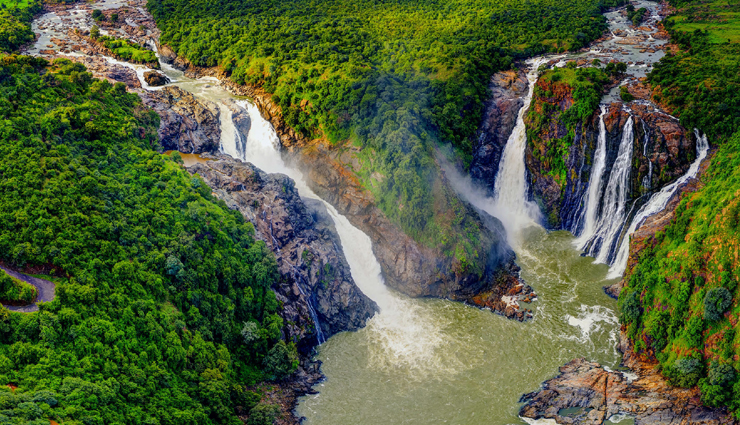
# Kaveri River
The Kaveri River, also known as the Cauvery, is one of the major rivers in southern India. It holds immense cultural, historical, and agricultural significance in the region, especially in the states of Karnataka and Tamil Nadu.
The Kaveri River originates from the Talakaveri hill in the Western Ghats of Karnataka. It then flows through the states of Karnataka and Tamil Nadu before emptying into the Bay of Bengal. The river spans approximately 800 kilometers (497 miles) in length and has a basin area that covers parts of both states.
The Kaveri River holds a prominent place in the cultural and religious narratives of the region. It is considered a goddess and worshipped by the local people. The river is mentioned in ancient scriptures and epics like the Ramayana and Mahabharata. According to Hindu mythology, the Kaveri River was created by Lord Brahma and is considered sacred.
The river is also known for its association with the Chola dynasty, one of the greatest empires in South India. The Chola kings, known for their grand architecture and patronage of arts and culture, built several magnificent temples and irrigation systems along the banks of the Kaveri River.
Agriculture is heavily dependent on the Kaveri River, as it supports an extensive irrigation network. The river's water is used for irrigation of crops such as paddy, sugarcane, and various fruits and vegetables, contributing significantly to the agricultural economy of the region.
The sharing of the Kaveri River water has been a source of dispute and contention between the states of Karnataka and Tamil Nadu for many decades. The issue revolves around the equitable distribution of water, particularly during times of drought, and has led to legal battles and protests.
The Kaveri River is also home to a diverse ecosystem, hosting various species of flora and fauna. The river basin encompasses wildlife sanctuaries and national parks that provide habitats for a range of wildlife, including elephants, tigers, and numerous bird species.
In recent years, the Kaveri River has faced challenges such as pollution, deforestation, and depletion of water resources. Efforts are being made to restore and conserve the river through initiatives focused on afforestation, water management, and environmental protection.
The Kaveri River holds a special place in the hearts of the people of Karnataka and Tamil Nadu. It is not only a lifeline for agriculture and irrigation but also a cultural symbol representing the rich heritage and traditions of the region. The river continues to play a vital role in shaping the lives, economy, and ecology of the southern Indian states it traverses.
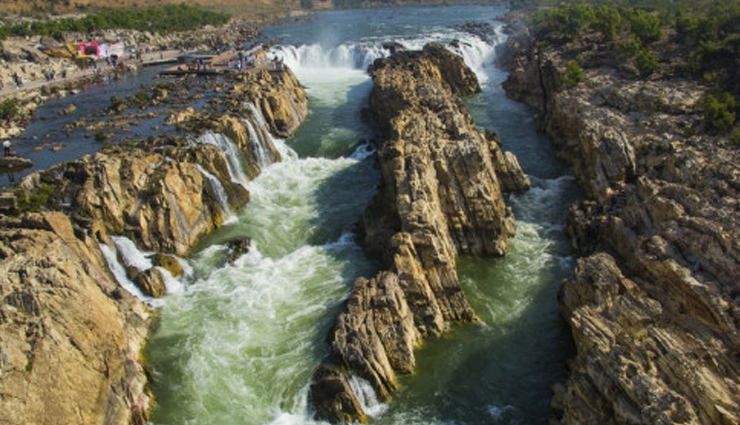
# Narmada River
The Narmada River is one of the most revered rivers in India, known for its religious, cultural, and historical significance. It flows through the states of Madhya Pradesh, Maharashtra, and Gujarat, in central and western India.
The Narmada River originates from the Amarkantak Plateau in Madhya Pradesh, near the eastern end of the Satpura Range. It then flows westward, traversing a distance of approximately 1,312 kilometers (815 miles) before merging with the Arabian Sea in Gujarat.
The Narmada holds immense religious importance in Hinduism. It is considered a form of the goddess Narmada and is believed to be a holy river capable of granting spiritual liberation. The river is mentioned in ancient scriptures like the Ramayana and Mahabharata, and it is associated with various mythological stories and legends.
The Narmada River is also home to several pilgrimage sites and temples along its banks. The Omkareshwar Jyotirlinga, located on an island in the Narmada, is one of the twelve revered Shiva temples in India. Other important pilgrimage sites include Maheshwar, where the revered Maheshwari sarees are woven, and Amarkantak, the source of the river and a sacred pilgrimage destination.
The river has played a significant role in shaping the history and culture of the region. It has been a focal point for trade, transportation, and human settlement for centuries. The banks of the Narmada are dotted with numerous archaeological sites, ancient temples, and historical structures, reflecting the rich heritage of the region.
The Narmada River is known for its scenic beauty, flowing through picturesque landscapes, gorges, and waterfalls. The Marble Rocks of Bhedaghat, a popular tourist attraction in Madhya Pradesh, showcase stunning cliffs along the river, creating a breathtaking sight.
The river also serves as a vital water resource for agriculture and irrigation. The Narmada Valley Project, one of the largest river development projects in India, aims to harness the river's water potential for irrigation, hydroelectric power generation, and drinking water supply.
Despite its religious and cultural significance, the Narmada River faces challenges such as pollution, deforestation, and the construction of dams, which have led to environmental concerns and displacement of local communities. Conservation efforts are being undertaken to address these issues and preserve the ecological balance of the river.
The Narmada River, with its spiritual, historical, and ecological importance, holds a special place in the hearts of the people of Madhya Pradesh, Maharashtra, and Gujarat. It continues to inspire devotion, provide livelihoods, and contribute to the socio-economic development of the region.
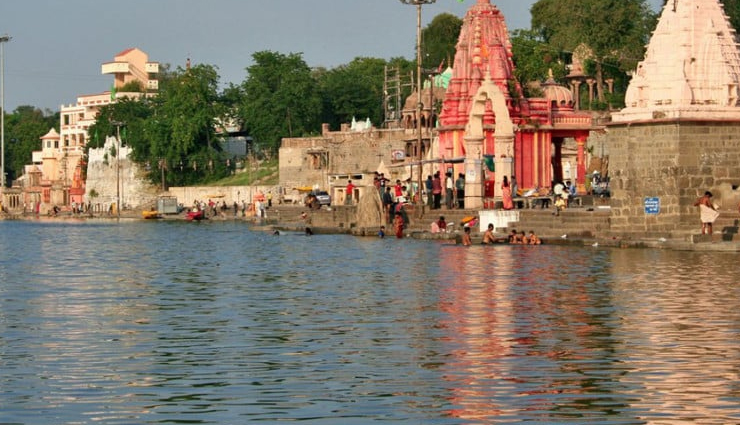
# Kshipra River
The Kshipra River, also known as the Shipra River, is a sacred river in central India that holds great religious and cultural significance. It flows through the state of Madhya Pradesh, particularly in the city of Ujjain.
The Kshipra River originates from a small pond called Kund located in the Triveni area of Ujjain. It then flows for approximately 192 kilometers (119 miles) before merging with the Chambal River near the village of Mohanpura.
Ujjain, an ancient city and one of the seven sacred cities in Hinduism, is closely associated with the Kshipra River. The city is considered to be the abode of Lord Shiva, and the river is believed to be a manifestation of the divine goddess Parvati. Ujjain attracts millions of pilgrims and devotees who visit to take part in religious rituals and seek spiritual blessings.
One of the most significant events associated with the Kshipra River is the Kumbh Mela. Every twelve years, Ujjain hosts the Simhastha Kumbh Mela, a grand religious gathering where devotees take holy dips in the river to cleanse themselves of sins and attain spiritual liberation. The Kumbh Mela in Ujjain is considered highly auspicious and draws devotees from all over the country.
The banks of the Kshipra River are dotted with numerous ghats (steps leading to the river) and temples. The Ram Ghat, where Lord Rama is believed to have performed a ritual bath during his exile, and the Harsiddhi Temple, dedicated to the goddess Harsiddhi, are among the prominent religious sites along the river.
The Kshipra River serves as a source of irrigation for agricultural lands in the region. Farmers rely on its water for the cultivation of crops, particularly during the monsoon season.
In recent years, the Kshipra River has faced environmental challenges, including pollution and encroachments. Efforts are being made by the government and various organizations to clean and restore the river's health, aiming to preserve its sanctity and ecological balance.
The Kshipra River is deeply ingrained in the cultural fabric of Ujjain and holds a special place in the hearts of its residents and devotees. It continues to be a symbol of spirituality, purity, and devotion, attracting pilgrims and visitors who seek solace and blessings on its sacred banks.

# Godavari River
The Godavari River, often referred to as the Ganges of the South, is one of the longest and most significant rivers in India. It holds immense religious, cultural, and historical importance, particularly in the states of Maharashtra, Telangana, Andhra Pradesh, and Odisha.
The Godavari River originates from the slopes of the Western Ghats in the state of Maharashtra, near the village of Trimbak. It flows eastward for approximately 1,465 kilometers (910 miles), making it the second-longest river in India after the Ganges. The river eventually empties into the Bay of Bengal, forming an extensive delta.
In Hindu mythology, the Godavari River is considered to be a sacred river, associated with the goddess Gautami. It is mentioned in ancient texts like the Ramayana and Mahabharata, and it is believed to cleanse sins and grant spiritual purification to those who take a dip in its waters.
The Godavari River is known for its religious significance and hosts numerous pilgrimage sites along its course. Nashik, located on the banks of the Godavari, is one of the four cities that host the Kumbh Mela, the largest religious gathering in the world. The river plays a central role during the Kumbh Mela, attracting millions of devotees who come to take holy dips and participate in rituals.
The banks of the Godavari River are adorned with several temples, including the Trimbakeshwar Temple, dedicated to Lord Shiva, and the Bhadrachalam Temple, dedicated to Lord Rama. These temples attract devotees and pilgrims who seek blessings and spiritual solace.
The Godavari River has been a cradle of civilization and has witnessed the rise and fall of ancient kingdoms. Its delta region is known for its rich agricultural lands, and the river serves as a vital source of irrigation for farmers. The region is renowned for the cultivation of rice, sugarcane, and various other crops.
The Godavari River faces challenges such as pollution, deforestation, and sand mining, which impact its ecosystem and water quality. Efforts are being made by the government and environmental organizations to conserve and protect the river's resources.
The Godavari River, with its cultural, historical, and ecological significance, holds a special place in the hearts of the people living along its course. It continues to be a source of inspiration, sustenance, and spirituality, playing a vital role in the lives and traditions of the communities it nurtures.
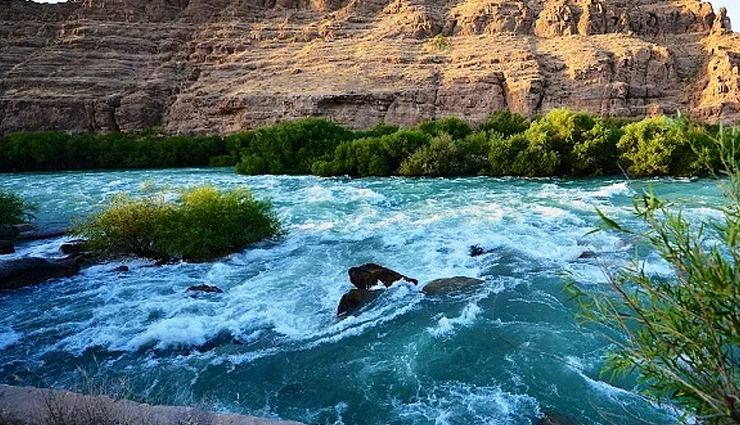
# Saraswati River
The Saraswati River is a mythical and ancient river mentioned in Hindu scriptures and mythology. It holds significant cultural and religious importance in Indian history and is revered as a sacred river associated with the goddess Saraswati, the Hindu deity of knowledge, wisdom, and learning.
According to ancient texts like the Rigveda, the Saraswati River was one of the most prominent rivers in the Indian subcontinent. It is described as a mighty and mighty flowing river that flowed from the Himalayas to the Arabian Sea, traversing through present-day northern India and parts of Pakistan.
The Saraswati River is often portrayed as a symbol of purity, knowledge, and enlightenment. It is believed to be the river of divine wisdom and the source of spiritual and intellectual growth. In Hindu mythology, the river is personified as a goddess who bestows blessings on those who seek knowledge and understanding.
Over time, the Saraswati River gradually diminished in size and eventually disappeared, leading to its classification as a "lost river." Geological studies and research suggest that the river might have changed its course or dried up due to geological and climatic changes in the region over thousands of years.
The Saraswati River has left its mark in various archaeological sites along its supposed course. Several ancient cities and civilizations, such as Harappa and Mohenjo-Daro of the Indus Valley Civilization, were believed to have thrived along the banks of the Saraswati River. These archaeological findings provide insights into the ancient history and cultural development of the region.
The search for the Saraswati River has been a subject of interest and exploration in recent years. Researchers, geologists, and archaeologists have been studying satellite imagery, geological surveys, and ancient texts to trace the possible path of the river and understand its historical significance.
The Saraswati River, though lost in its physical form, continues to hold a special place in Indian culture and mythology. It represents the eternal quest for knowledge and wisdom and serves as a reminder of the ancient heritage and spirituality of the Indian subcontinent. The river's symbolic presence resonates with devotees and scholars, emphasizing the importance of intellectual growth and the pursuit of truth.





